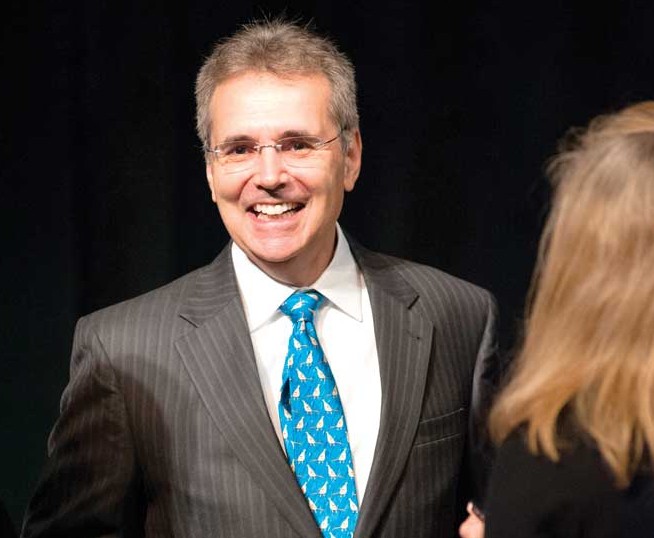It started seven years ago with a small, flesh-colored bump on his face. It didn’t seem like a big deal, so business owner Michael Gunter of St. Charles ignored it. He went to a dermatologist when it started to itch, expecting to leave the office with a bandage on his cheek. After a misdiagnosis and a couple of surgeries, he discovered he had a rare form of advanced melanoma that spread rapidly to his lungs, brain, spine and kidneys. During the next three years, he underwent 25 rounds of radiation and other treatments, but the cancer wouldn’t budge. At one point, his life expectancy was six to nine months.
That’s when Gunter turned to University of Texas MD Anderson Cancer Center in Houston. There he met Dr. Patrick Hwu, chair of melanoma and sarcoma medical oncology. “Hwu treated me with tumor infiltrating lymphocytes (TIL), an innovative type of cellular immunotherapy not yet available in St. Louis,” Gunter says.
Hwu explains, “We took pieces of his tumors to the lab, cloned and grew the immune cells—or killer lymphocytes—and then gave them back to him intravenously. The lymphocytes release proteins that poke holes in cancer cells and cause them to implode. It’s the kiss of death for metastatic melanoma in about half of all patients, and it might be for other types of cancers as well.” The cells ‘recognized’ Gunter’s tumors and went after them like a heat-seeking missile, Hwu notes. “Within days, the tumors started shrinking.”
MD Anderson, established in 1944, is considered a leader in cancer research and care. It has earned the No. 1 ranking in U.S. News & World Report’s ‘America’s Best Hospitals’ survey multiple times, and is repeatedly first in both number and dollars of National Cancer Institute-awarded research grants. “Practice makes perfect in medicine,” says president Dr. Ronald DePinho. “Our specialists offer extensive experience in treating rare and common cancers with leading-edge therapies, a team approach and a care continuum from early detection to survivor support. We establish standards for cancer treatments, produce groundbreaking discoveries in the laboratory, and develop programs and networks that benefit patients and physicians here and around the world. Lifesaving information and access to the latest clinical trials, like the one that helped Mike, are meant to be shared.”
Among MD Anderson patients, five-year overall survival rates exceed federally reported averages, even though many patients arrive with advanced disease, DePinho notes. “Our Moon Shots program, which brings academia, technology and industry together in an effort to reduce cancer deaths, is the most integrated, comprehensive cancer initiative ever launched by an academic institution.”
There’s a strong relationship between MD Anderson and Missouri, adds DePinho, who will meet with St. Louis medical, business and civic leaders next month.
“More than 10,000 Missourians have sought second opinions, diagnosis and treatment with us,” he says. “If you can’t come to Houston, we can collaborate with your local doctor, or you can seek care at St. Francis Medical Center in Cape Girardeau and Ellis Fischel Cancer Center in Columbia, part of the MD Anderson Cancer Network. Many Missouri physicians have trained with us, and hundreds refer patients and pathology samples to us. And we’re a founding member of the National Comprehensive Cancer Network, which includes Siteman Cancer Center at Barnes-Jewish Hospital and Washington University.”
Gunter is now considered cancer-free. He sees Hwu twice a year, but all that’s left of his rapidly growing tumors is inactive scar tissue. “The first thing I did when I learned I was OK was shake hands with every single person who works in Anderson’s TIL lab,” Gunter says. “These heroes often work around the clock, because they know there’s someone like me waiting for those lifesaving cells. We fought the good fight together. They gave me my life back.”
Pictured: Dr. Ronald DePinho, president of MD Anderson Cancer Center








